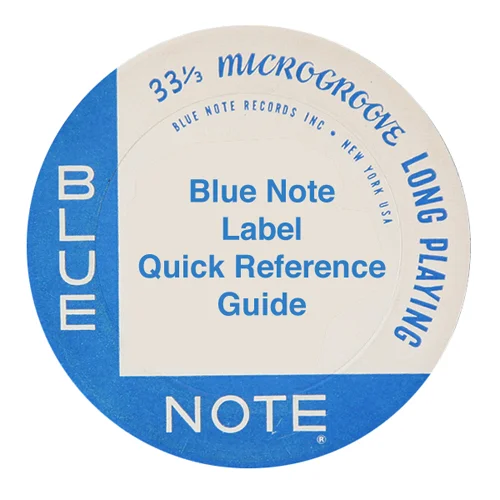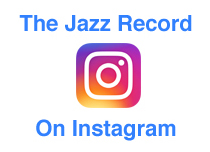Second Time Around: Thelonious Monk - "Criss-Cross"
/Thelonious Monk • Criss-Cross • 1963 • Columbia Records
Recorded November 1962, February & March 1963 in New York City
Selections:
The Tracks:
A1. Hackensack
A2. Tea For Two
A3. Criss-Cross
A4. Eronel
B1. Rhythm-A-Ning
B2. Don't Blame Me
B3. Think Of One
B4. Crepuscule With Nellie
The Players:
Thelonious Monk - Piano
Charlie Rouse - Tenor Sax
John Ore - Bass
Frankie Dunlop - Drums
The Record:
Not too long ago I wrote about Monk's Dream, Thelonious Monk's 1963 debut on Columbia Records, an album that is often cited as a masterpiece from the latter part of his long career (read about that here). As fantastic as Monk's Dream is, it is possible that it's follow up is even better. Monk knew he was on a roll with his new quartet and didn't waste much time getting back in the studio: both "Hackensack" and "Rhythm-A-Ning" were recorded less than a month after the sessions that produced Monk's Dream were completed. As such, Criss-Cross is a continuation of the excellence that we got with it's predecessor, only this time Rouse, Ore and Dunlop are even more settled in with the ways and means that are the hallmarks of Monk's musical genius.
Criss-Cross might be the "happiest" album in Monk's discography, all the tunes ring out with a certain joy and ebullience that is not always out front and center on his other recordings. Some of this has to be due to the growing connection that the players were experiencing, because let's face it, Monk's music could be challenging for even the most accomplished of musicians, and these guys are flat-out on fire here, from Ore and Dunlop moving in stride with Monk's angular playing to some of the finest tenor playing of Rouse's career. I can only imagine that many satisfied smiles were exchanged after each take was completed in the studio.
The tracks on Criss-Cross (a mix of originals and standards) had all been recorded by Monk at various times earlier in his career, although just as on Monk's Dream these are not mere re-treads, but rather new and exciting takes on songs that were well known to his fans. The versions of "Criss-Cross", "Rhythm-A-Ning" and "Crepuscule With Nellie" here are all fantastic, with the quartet breathing fresh life into songs that are now considered classics. The whole album swings like mad - including a glorious seven minute solo take of "Don't Blame Me" - and like all of his Columbia LPs, should be a part of any modern jazz collection.
Finally - and this one's for the vintage vinyl nerds - according to AllMusic the original liner notes by Nica De Koenigswarter have been replaced by more "in depth" notes by a Rolling Stone writer on the 2003 Columbia/Legacy re-issue. This is a shame since De Koenigswarter was an important figure in bebop as a patron and friend of both Charlie Parker and Thelonious Monk (his famous composition "Pannonica" was written for her), and in fact she was with both men when they died: Bird in 1955 in her Fifth Avenue home in New York City, and Monk in 1982 after he had secluded himself in her New Jersey home for the last six years of his life. A rather morbid footnote to be sure, but Koeningswarter certainly played an important role in both musician's success, and her notes are a nice snapshot into her love for not only Monk's music, but also for the man himself. Simply for their historical significance for modern jazz music and Monk alike, her notes should have been included in any self-respecting re-issue for folks to enjoy.
The Vinyl:
The Details: I managed to score an original 1963 mono copy on the red 2-eye Columbia label. These heavyweight vintage pressings are not overly rare, and are certainly more recommended than the later 1970s represses on the thinner vinyl that is emblematic of that decade. Criss-Cross was simultaneously released in a stereo version as well, also on the 2-eye label, although with the "Stereo" and "360 Sound" along the bottom.
The Price: $23 at a local record shop. Seems pretty fair to me, right around the going rate online, although the patient shopper might be able to get one for a little less. There doesn't seem to be too much of a difference in price between the original mono and stereo versions, so I suppose it's up to whichever you prefer if you decide to get yourself a copy.
The Sound: Fantastic vintage vinyl sound, with tons of volume and depth, this is how Monk and company should be heard. Monk's piano rings out, and it feels like you are up close and personal with Rouse while he is blowing his tenor. No big secret on the audio quality of these early '60s Columbia LPs, the 2-eye pressings offer up excellent vintage analog playback, often without breaking the bank to pick one up.
Final Thoughts:
After Criss-Cross Monk had a handful of quality studio albums left in him, but the 1960s would mark the end of his time as a productive jazz artist (his final studio date was in 1971 for Black Lion). Much of this was due to a rapid decline in his mental health, but I'll let you read about that on your own time, I prefer to celebrate Monk for his jazz legacy and the enjoyable music he left us, rather than dwell on the sadness of his later years. If you are unfamiliar with the genius of Monk, Criss-Cross (as well as Monk's Dream) is as good a place to start as any for discovering what the man had to offer the discerning listener. After that, work your way back through his discography, the joys of discovery to be had there are myriad and well worth the musical journey.












